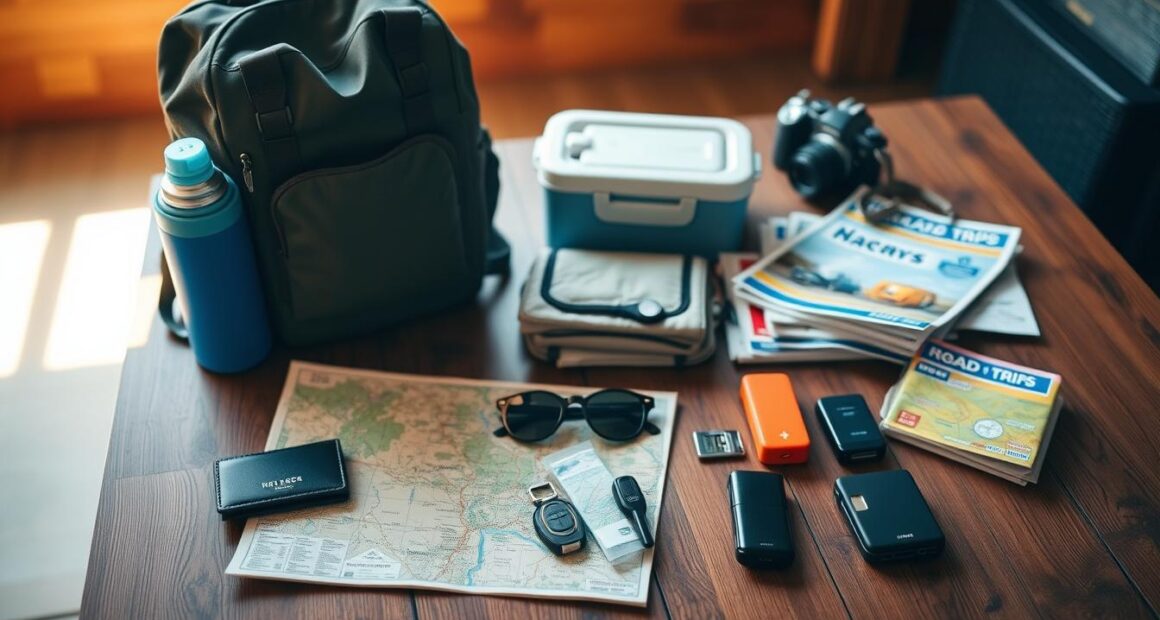There’s something inherently special about hitting the open road, the wind in your hair, and the sound of your favorite playlist setting the tone for adventure. Yet, as the miles stretch ahead, the delight of spontaneous travel can quickly morph into anxiety when financial realities rear their heads. Many travelers find that without a carefully crafted road trip budget, the joy of exploring diverse destinations—from breathtaking national parks to quirky roadside attractions—can be overshadowed by unexpected expenses. By understanding budget road trip tips and preparing for the financial side of your journey, you can strike the perfect balance between adventure and responsibility, allowing you to enjoy each moment without the burden of financial stress. Let’s embark on this journey together, ensuring your road trip is as memorable for its affordable thrills as it is for its breathtaking sights12. To ensure a smooth and enjoyable journey, it’s essential to embrace the ultimate road trip planning tips that will help you navigate both the fun and the finances. Start by mapping out your route and identifying key stops, allowing you to balance paid attractions with free activities, such as scenic hikes or local festivals. Additionally, setting aside a specific budget for each day of your trip can help you maintain control over your spending, ensuring that the road ahead remains full of excitement and discovery rather than worry.
Key Takeaways
- Create a road trip budget to manage expenses and enjoy your adventure.
- Fuel typically accounts for about 30% of your overall road trip budget.
- Estimated daily spending ranges from $50 to $150, influenced by travel habits.
- Cooking your own meals can lead to significant savings on food costs.
- Plan your route and stops ahead to avoid impulse spending and increase savings.
- Utilize apps to find affordable accommodation and attractions on your journey.
Understanding the Importance of a Road Trip Budget
Creating a road trip budget is essential for a successful travel experience. A well-planned budget ensures you can allocate your resources efficiently, allowing for some flexibility without overspending on crucial areas such as gas, food, and accommodation. Taking the time to create a budget not only reduces financial stress but also gives you the freedom to enjoy spontaneous detours on your journey without guilt or anxiety.
Benefits of Budgeting for Your Trip
Establishing a clear road trip budget has several advantages:
- Effective resource allocation helps avoid overspending.
- Reduces the risk of unexpected expenses, keeping your finances in check.
- Enables you to make informed decisions about inexpensive road trip options, including lodging and meal choices.
- Allows for a more enjoyable travel experience, as you’ll feel secure knowing you have contingencies in place.
Common Budget Mistakes to Avoid
Avoiding common budgeting mistakes can lead to a smoother road trip experience:
- Underestimating total expenses can result in financial stress during travel.
- Neglecting to budget for emergencies can lead to unplanned financial burdens.
- Not including all potential costs such as tolls, meals, and activities may impact your overall experience.
The average estimated cost for a five-day road trip is around $700, considering lodging, food, fuel, and an emergency fund3. If you’re driving across the country on a traditional route of 2,500 miles, fuel costs alone may reach up to $4304. This emphasizes the importance of carefully tracking expenses and employing smart budget road trip tips for a seamless adventure.
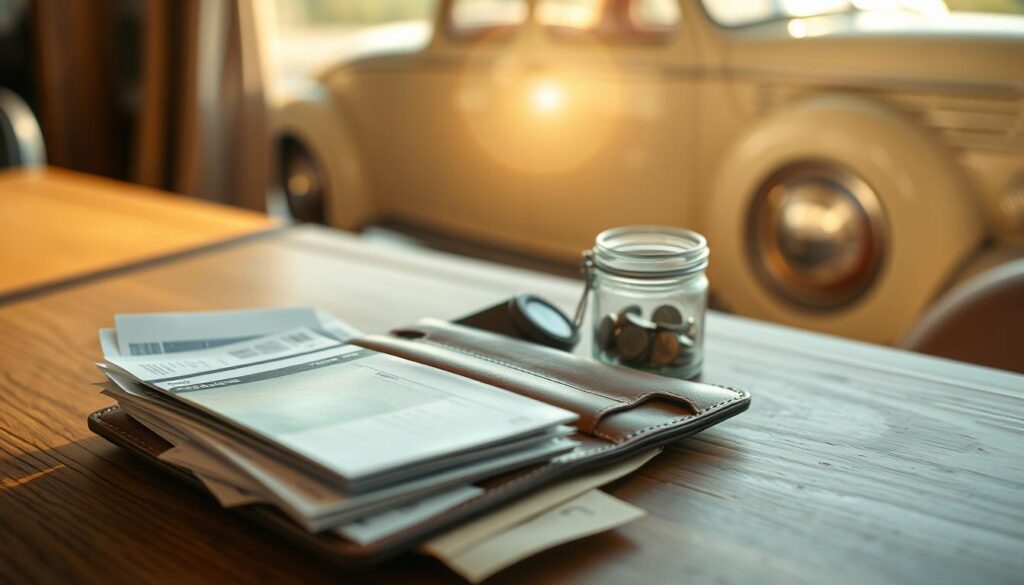
Estimating Your Total Road Trip Costs
Accurate road trip cost planning is crucial to avoid unexpected expenses that could derail your adventure. Understanding your primary costs can help streamline your budget. The key components to consider are gas expenses and accommodation options. By calculating these costs upfront, you can place yourself in a position to start saving money on road trips.
Gas: Calculating Fuel Expenses
Gas prices are often the largest expense on any road trip. As you plan, take the time to estimate the total distance of your journey and your vehicle’s fuel efficiency. For instance, a hypothetical trip from New York to Los Angeles, covering about 2,777 miles, has seen gas expenses increase significantly. The average cost for a gallon of regular gasoline rose from $2.44 in March 2019 to $3.32 in March 2024, leading to a total gas cost increase for this trip from about $200 in 2019 to $272 in 2024, requiring 82 gallons of gas5. Utilizing resources like Google Maps and apps like GasBuddy can help you find the best current prices.
Accommodation Options and Costs
When planning where to stay, explore all available accommodation options, from hotels to camping. The average hotel room price has increased from $168.32 per night in March 2019 to $194.04 per night in March 20245. If you choose to stay for six nights, expect to pay around $1,165 in lodging costs, up from about $1,010 in 2019. National Parks present an alternative; camping costs range from $15 to $30 per night, while cabins typically rent from $85 to $1105. By comparing these costs and making early bookings, you will find ways to effectively save money on road trips.
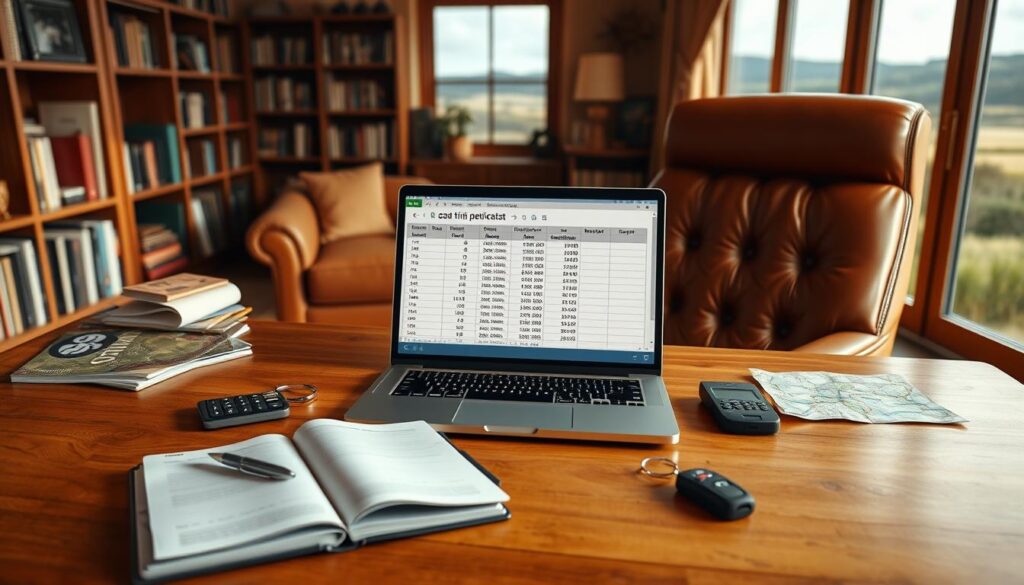
| Cost Category | 2019 Cost | 2024 Cost |
|---|---|---|
| Gas | $200 | $272 |
| Hotel (per night) | $168.32 | $194.04 |
| Lodging (6 nights) | $1,010 | $1,165 |
| Total Trip Cost | $1,420 | $1,695 |
| Food | $210 | $258 |
Creating a Daily Spending Limit
Establishing a daily spending limit serves as a practical approach to manage your road trip budget effectively. Breaking your total budget into daily allowances allows you to allocate funds wisely for essentials like food, gas, and activities. Calculate the duration of your travel and the distances between destinations to organize your daily spending efficiently.
How to Break Down Your Budget by Day
To optimize your budget-friendly travel experience, consider setting specific spending limits for categories that matter most. For instance, if your total trip budget is $1,000 and your trip lasts ten days, aim for a daily spending limit of approximately $100. Integrating research into your planning further enhances this process; an “America the Beautiful” pass costs $80 per year and covers over 2,000 federal recreation sites for up to four adults per vehicle6. Pre-booking hotel accommodations can provide considerable savings, with many travelers noticing an average reduction of 10-20% compared to last-minute bookings7. Tracking fixed expenses such as fuel and lodging can streamline your calculations while allowing more flexibility for variable costs like dining and activities.
Tips for Sticking to Your Daily Limit
Staying within your daily spending limit requires discipline and attention. Start by setting daily goals for each category and tracking your expenditures closely. Utilize budgeting apps or simple cash envelopes designated for different expense categories, ensuring you only spend what you allocated for the day. For unexpected costs, having a buffer can alleviate financial stress; a weekend car trip may only require a $100 buffer while a longer journey could necessitate an additional $5007. To further curb costs, consider meal preparation or snack packing, which can significantly reduce your food expenses while traveling8. Adopting these strategies will keep your road trip budget in check, enabling you to enjoy your adventure to the fullest.
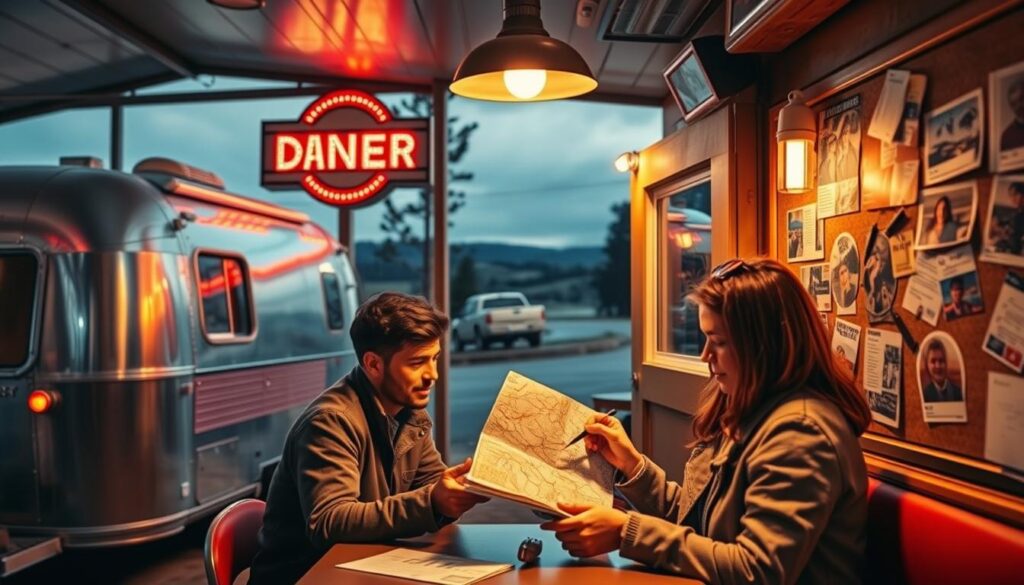
Transportation Costs Beyond Gas
When planning your road trip, it’s essential to recognize that transportation costs extend far beyond just fuel expenses. Understanding these costs can help you budget effectively for your journey.
Vehicle Maintenance Considerations
Prior to setting out, consider the maintenance your vehicle may require, which includes checking oil levels, tires, and brakes. On average, vehicle maintenance costs amount to around 10 cents per mile9. If you’re driving a significant distance, these expenses can quickly add up, especially if you’re in an older vehicle. Americans collectively spent approximately $12,295 annually on transportation as of 2023, indicating the high stakes involved10. Furthermore, ensuring your car is road-ready can mitigate unexpected breakdowns that would otherwise lead to costly repairs during your trip.
Car Rentals vs. Using Your Own Vehicle
Deciding between renting a car or using your own depends on several factors. Rental car prices have seen an average increase of 16.5% since January 20209. You should factor in these transportation costs, including insurance or any additional fees associated with rental services when making your choice. For shorter trips, such as the 382 miles from Los Angeles to San Francisco, it may be cheaper to drive than to fly. However, for longer distances like the 2,789-mile journey to New York, flying might save you money9. Whether you’re considering cheap road trip ideas or looking for the most economical method, weighing the costs of vehicle use is crucial.

Ultimately, being aware of total transportation expenses can significantly enhance your planning, allowing for a smoother, more enjoyable road trip experience.
Planning Your Route and Stops
When embarking on an adventure, strategically planning your route can significantly impact your overall budget and experience. Utilizing budget-friendly apps for route planning, such as Roadtrippers or GasBuddy, allows you to identify inexpensive road trip options and monitor fuel prices effectively. These tools help in mapping out the best paths to minimize unnecessary detours and expenses, ensuring budget-friendly travel is at the forefront.
Use of Budget-Friendly Apps for Route Planning
Apps can streamline your travel planning while keeping costs in check. With the average distance driven in a single day typically being around 1,267 kilometers, using these apps ensures you plot a course that avoids unnecessary long-haul roadways11. Popular options include:
- Roadtrippers – Ideal for planning scenic routes and discovering attractions along the way.
- GasBuddy – Useful for finding the cheapest fuel prices in your area, saving money across your journey12.
- Waze – Provides real-time traffic updates and route suggestions to avoid delays.
Selecting Affordable Attractions and Stops
You can enhance your trip by selecting affordable attractions that align with your interests while keeping your budget intact. Look for free or inexpensive experiences to enrich your travel without overspending. For example, unique roadside attractions or local parks often provide engaging and memorable experiences at little to no cost. Food from local markets or food trucks can be another enjoyable and budget-friendly option12.
Take the time to prepare a list of possible stops along your journey. By evaluating costs related to lodging, such as campgrounds versus hotels, you can make informed decisions that contribute to your budget-friendly travel goals. For instance, consider staying outside major cities to secure more affordable accommodation rates, thereby stretching your budget further and allowing you to enjoy more attractions12.

| Transport Mode | Distance Traveled | Estimated Fuel Cost | Accommodation Cost | Total Estimated Cost |
|---|---|---|---|---|
| Toyota Prius | 2,000 miles | $13313 | $36013 | $1,05313 |
| Honda Odyssey | 2,000 miles | $24013 | $10013 | $69013 |
| RV | 2,000 miles | $75013 | $20013 | $1,30013 |
By embracing budget-friendly apps and selecting affordable places to stop, you can enjoy an adventure without straining your finances.
Food Expenses on the Road
Managing food expenses on the road is crucial for staying within your budget during a road trip. You can significantly reduce costs by combining grocery shopping with occasional dining out. By planning simple meals that are easy to prepare and packing snacks, you can maximize your savings while enjoying your journey.
Eating Cheap: Grocery Shopping Tips
Before hitting the road, stock up on essentials. A well-planned grocery list might include items like fruits, oats, and canned goods. For example, on a recent trip, spending $50 on groceries before the trip and an additional $30 during the trip kept costs low while providing healthy options14. Opt for easy-to-prepare foods such as tortillas filled with canned tuna and fresh veggies, which can keep your daily cost lower. Carrying reusable bottles for hydration helps avoid unnecessary purchases at convenience stores, further aiding in saving money on road trips.
Dining Out: Finding Affordable Restaurants
When you desire a meal out, find affordable restaurants or local diners that fit your budget. The average meal for two is around $28 when dining out, which can add up quickly over the span of a week14. Using review apps like Yelp or TripAdvisor can help locate hidden gems that won’t break the bank. Eating smart allows you to experience local flavors without overspending—perfect for enjoying your scenic journey.

Accommodation Strategies for Savings
Finding cost-effective accommodations can make a significant impact on your overall road trip budget. There are various accommodation strategies to consider, such as camping and staying in hotels, each offering unique benefits and savings potential.
Camping vs. Hotels: Pros and Cons
Camping often provides lower-cost options and a chance to connect with nature, with typical campsite costs ranging between $10 to $30 per night15. On the other hand, budget hotel rates start around $50 per night, but prices can significantly increase in busy downtown areas16. If you prefer hotels, consider using loyalty programs and membership discounts for additional savings, which can also reduce costs through long-term membership offers17.
Booking Last-Minute Deals
Last-minute deals can be a great way to save money on accommodations. Booking in advance might save you up to 20% on your stay, which is a useful budget road trip tip17. Don’t overlook the potential for additional savings during the shoulder or off-season when hotel prices may drop by over 30%17. Utilizing platforms such as Booking.com or Expedia can help you find exclusive deals, especially for last-minute bookings, ensuring that your trip remains within budget while enjoying comfortable accommodations15.
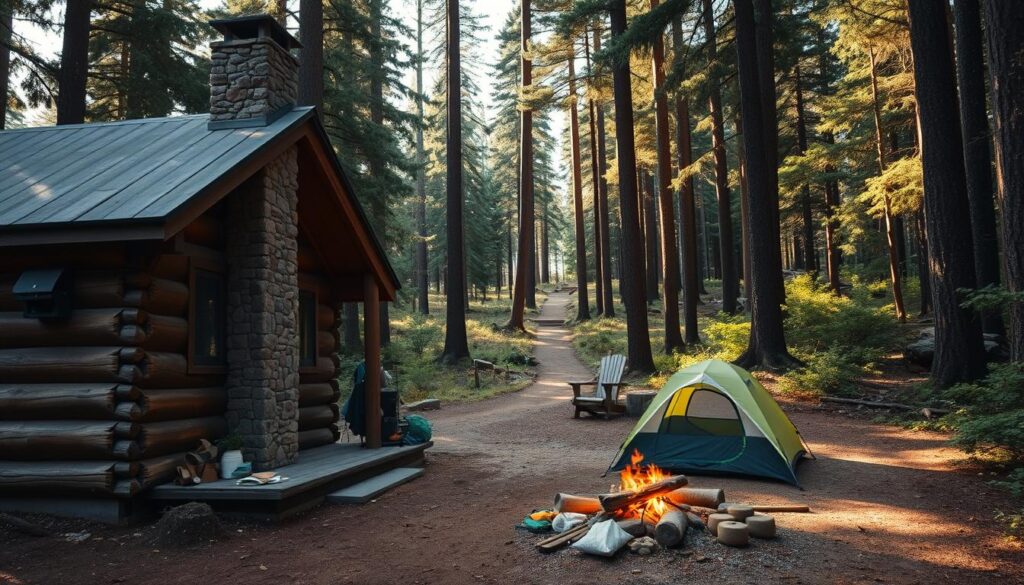
Entertainment and Activities Budget
Creating a well-thought-out entertainment budget enhances your road trip experience and prevents financial stress. Embracing cheap road trip ideas ensures you enjoy memorable activities without overspending. Free and low-cost options abound, providing an enjoyable way to explore local culture and the great outdoors.
Free and Low-Cost Activities
Many families seek free and low-cost activities during their travels. Hiking, for instance, provides an excellent way to experience nature without any entrance fees. Community festivals often include free entertainment such as live music and farmer markets. A visit to over 200 national parks can be rewarding; families can receive badges for their kids through Junior Ranger programs, fostering engagement with the environment18. Selecting local community theater performances or attending minor league sports events can significantly reduce entertainment expenses, as these options tend to be less costly than larger events18.
Budgeting for Paid Attractions
Paid attractions can enhance your journey when planned for effectively. Research can reveal group discounts at popular sites, allowing you to enjoy attractions without breaking the bank. For instance, the National Parks Pass, at $80, offers access for an entire vehicle at numerous scenic locations, making it perfect for larger families on a budget19. Budget-friendly planning should include remaining flexible by targeting both must-see attractions and less expensive alternatives. An estimated $20 in cash per day is recommended to cover unexpected road trip expenses, seamlessly integrating into your overall entertainment budget19. With careful planning, your entertainment budget can provide both adventure and relaxation throughout your journey.
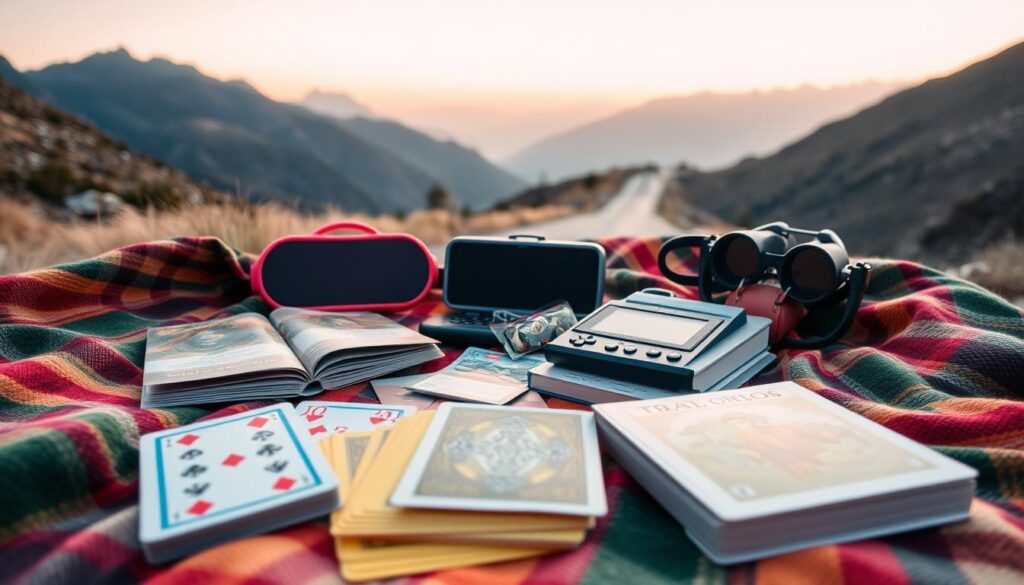
| Activity Type | Cost | Examples |
|---|---|---|
| Free Activities | $0 | Hiking, local festivals, Junior Ranger programs |
| Low-Cost Activities | Varies (up to $35) | Community theater, minor league sports |
| Paid Attractions | $80 – $109 | National Parks Pass, theme parks |
Emergency Fund: Why It’s Essential
An emergency fund plays a critical role in ensuring a smooth road trip by providing financial security against unexpected events. Without a proper safety net, unforeseen expenses such as vehicle repairs or sudden lodging needs can derail your plans and put a strain on your budget travel hacks. Setting aside a portion of your total budget is vital; experts suggest that allocating around 10-15% of your total travel budget can cover unexpected situations effectively20. It’s important to know the average monthly expenses in America for singles is about $4,300, which makes it advisable to save enough for at least three months of expenses for single individuals. For a family of four, the average monthly expenses jump to nearly $9,200, necessitating a larger safety net21.
How Much to Set Aside for Emergencies
For individuals with consumer debt, the recommended starter emergency fund is approximately $1,00021. If you’re single, aim to save three months’ worth of expenses, totaling around $12,90021. For families, a comprehensive emergency fund should encompass six months’ expenses, approximately $55,200, to provide adequate protection in financial emergencies21. Therefore, consistently contributing to this fund positions you better to manage potential setbacks during your trip, allowing you to focus on saving money on road trips and maximizing your overall travel experience.
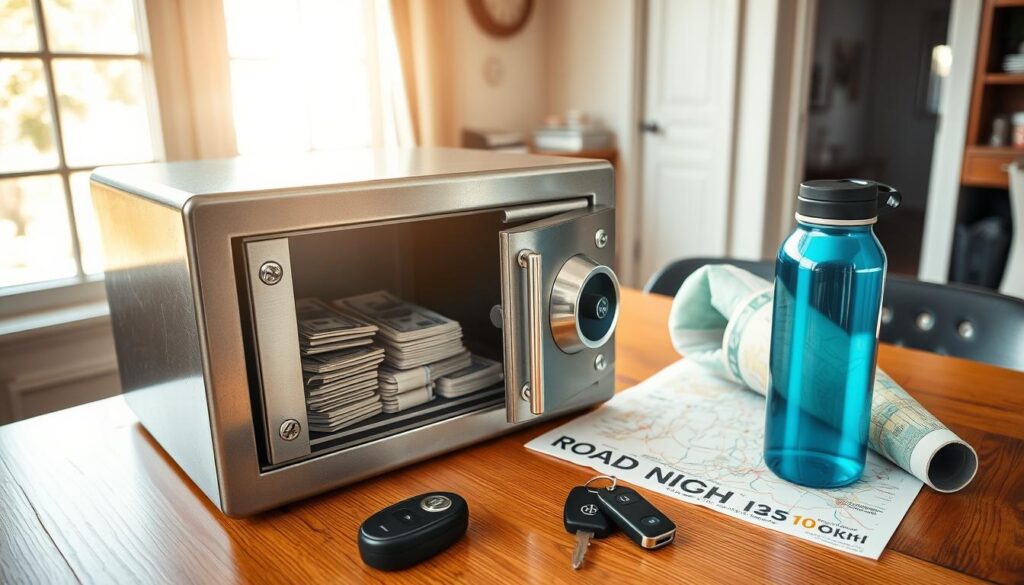
Reassessing Your Budget During the Trip
As you embark on your journey, it’s crucial to continuously evaluate your budget based on real-time expenses. Being proactive about your finances can prevent overspending and help you enjoy your experiences without financial stress. Many travelers find themselves needing to adjust their budgets due to unexpected costs, with about 60% reporting changes after the trip has started22. Make it a habit to track your spending diligently and adapt your budget as needed.
Adapting Your Budget Based on Reality
Flexibility in your budget can make a significant difference in your experience. Keep in mind that fixed costs like accommodation typically account for 30-50% of your overall budget, which means any changes in plans can have a notable impact23. Transportation expenses might also fluctuate unexpectedly, and it’s advisable to be prepared for a potential 20% increase beyond your initial estimates23.
Tips for Real-Time Budget Adjustments
Utilizing budgeting tools and apps can alleviate the burden of manually tracking expenses, with the added benefit of potentially reducing overspending by up to 30%23. Consider taking down daily logs of your spending; this simple act can lead to a reduction of unnecessary purchases by 25% while on the road23. Always be mindful of tipping and additional costs that might arise—10-20% more on meals can add up quickly, especially in tourist areas23.
- Track expenses using apps like Venmo or Splitwise for easy coordination among travel companions.
- Adjust your daily spending limit based on real-time observations and challenges faced.
- Set aside a contingency fund of 10-15% of your total budget to manage unexpected situations23.
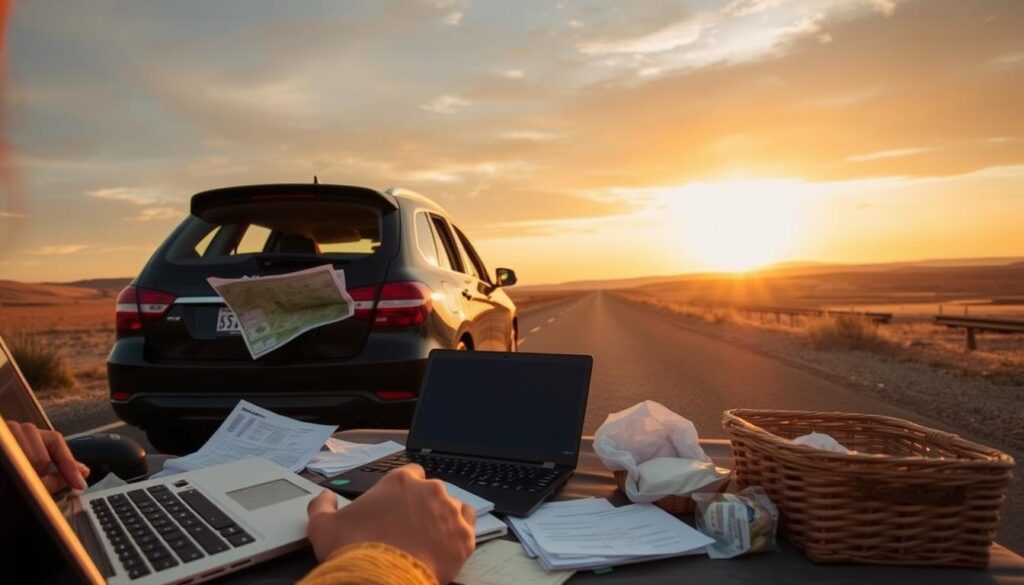
Ultimately, creating a comfortable balance between enjoyment and financial stability is key when saving money on road trips. The ability to adapt your plans while keeping track of your expenses will enhance your travel experience, allowing you to make the most of every moment without financial strain2322.
Using Technology to Manage Your Budget
In today’s digital age, leveraging technology can significantly enhance your ability to manage your road trip budget effectively. Numerous apps are available that make tracking your expenses a breeze. For instance, implementing a zero-based budgeting strategy can help you uncover up to $400 to use toward expenses24. Additionally, budgeting apps often help users reduce monthly expenses by nearly 10% while identifying extra funds hiding in plain sight, sometimes amounting to as much as $395 in the first month of tracking24.
Apps for Tracking Expenses
Apps like EveryDollar allow users to create detailed budgets, with a specific job for every dollar spent, leading to guilt-free spending24. With such tools connecting directly to your bank, it becomes easier to track transactions and maintain an accurate account of your financial activity. This streamlined approach helps maintain clarity about your spending, allowing for quick adjustments if necessary. As you travel, regularly updating your budget through these apps ensures you stay on track with your road trip budget while accommodating any unexpected costs that arise.
Budgeting Sheets and Spreadsheets to Consider
Besides mobile applications, utilizing budgeting sheets or templates in programs like Excel can also enhance your travel budgeting process. Creating a spreadsheet allows you to organize expenses across categories like accommodation, transportation, meals, and activities25. Employing functions such as SUM can automate your calculations, providing immediate visibility into your spending trends25. A well-structured spreadsheet will include sections for total expenses, income, and remaining budget, ensuring that you have a complete picture of your financial situation throughout the journey.
